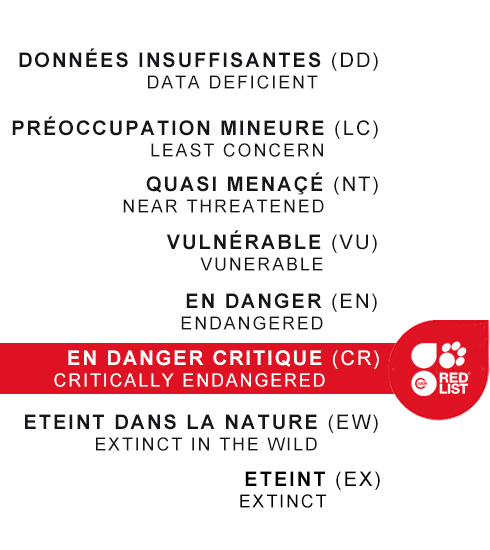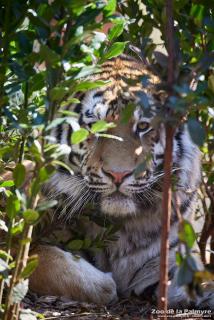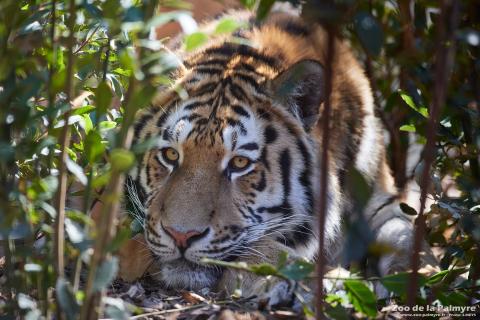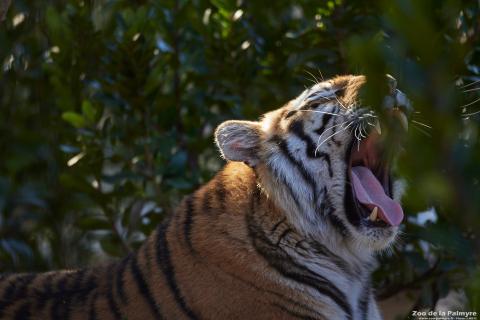Amur Tiger

Amur Tiger

-
Class
Mammalia -
Order
Carnivora -
Familly
Felidae
-
 2.4-3m
2.4-3m -
 100-300kg
100-300kg -
 103 days
103 days -
 1–5 cubs
1–5 cubs -
 12 to 15 years
12 to 15 years
-
Diet
carnivorous (deer, roe deer, wild boar…) -
Habitat
Russian Far East and northeastern China -
Range
coniferous and birch woodlands -
 This species is part of a European Breeding Program
This species is part of a European Breeding Program
-
Population in the wild
En diminution -
IUCN REDLIST status


The Amur tiger, formerly known as the Siberian Tiger due to its abundant presence in this part of northern Asia, is the largest of the six currently identified subspecies. Now extinct in Siberia, it gets its new name from the Amur River, which runs through the center of its current range between the Russian Far East and China.
Sometimes weighing over 300kg, it is distinguished from other subspecies by its lighter and fewer stripes helping it blend in with its snow-covered habitat. In winter, its large paws help the tiger move easily and silently on snowy ground, while its layer of subcutaneous fat protects it from the extreme cold.
Built for hunting, this apex predator stalks its prey between dusk and dawn, ambushing them before pouncing on them and killing the smallest ones with a bite to the nape, or the largest ones with throat bite. It primarily consumes ungulates (deer, roe deer, wild boar).
Tigers are generally solitary cats except when a female is raising cubs. Their territories extend over several hundred square kilometers, depending on the quality of the available habitat and the abundance of prey.
The female gives birth to an average of two to three cubs after a gestation period of three and a half months. They are weaned after six months but remain with their mother until around two years of age.
Tigers use a wide variety of vocalizations to communicate: chuffing (affectionate greeting), growling (more aggressive sound), hissing, grunting, roaring, mewling only used by cubs. Tigers’ roars are very loud and can be heard several miles away. Like whales and elephants, tigers can make low frequency sounds that we can’t hear. Infrasounds help tigers communicate with each other through dense forest and over long distances.
Estimated at over 100,000 individuals at the beginning of the 20th century, the wild tiger population collapsed to just 3,200 in 2010. Thanks to conservation efforts, the total number of tigers in the wild has grown to 4,500 individuals, but they occupy barely 8% of their original range in a dozen Asian countries. Some of these countries have seen their tiger populations increase significantly, but others have seen them virtually disappear. The threats driving this decline include poaching for the illegal trade of their body parts used in traditional Asian medicine, habitat loss and human encroachment which leads to increased human-tiger conflicts, and the scarcity of prey on which they feed.
Barely 350 to 450 Amur tigers survive in the wild.







